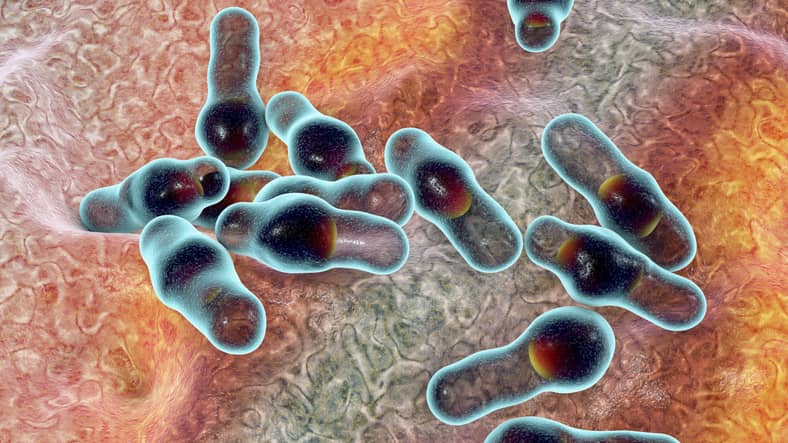How do you get a staph infection?
Staph infections are caused by bacteria called staphylococcus aureus. These bacteria usually live harmlessly on the surface of the skin, often in the nose, armpits, and on the buttocks. However, they can cause an infection if they get into the skin through a break, such as a cut or a bite.
Staph infections can be passed from person to person, often through close skin contact or by sharing personal hygiene items, such as towels or toothbrushes. Less commonly, a staph infection can be spread through droplets in coughs and sneezes.
How serious is a staph infection?
Staph infections can cause less serious skin and soft tissue infections, such as boils or impetigo, which can go away on their own or with antibiotic treatment.
Less commonly, staph bacteria can cause serious and potentially life-threatening infections, such as cellulitis, blood poisoning, septic arthritis, endocarditis and toxic shock syndrome.
See your doctor or go to a hospital if you think you have a staph infection and:
- it is getting worse
- it is spreading quickly
- it has lasted more than a week
- you have a weakened immune system
What are the first signs of a staph infection?
Staph bacteria most commonly cause skin infections that present as:
- a painful red lump or bump - sometimes filled with pus
- hot, red and swollen skin
- skin sores, crusts or blisters
- sore, red eyelids or eyes
Skin infections can develop into more serious internal infections that cause a wide variety of symptoms, including:
- a high temperature (fever)
- low blood pressure that can make you feel dizzy when you stand up
- confusion or disorientation
- shortness of breath
What diseases can staphylococcal infections cause?
Staph infections can cause many types of infections. Most commonly, staph infections cause skin and soft tissue infections, such as boils, impetigo or cellulitis.
Less commonly, staph infections cause internal infections of the blood, heart valves, heart implants, such as pacemakers and catheters, spleen, bones and joints.
Staph bacteria can also cause pneumonia, meningitis, urinary tract infections (especially in people with a urinary catheter) and food poisoning.
How do you get rid of a staph infection?
If you have a staph infection, or think you do, see a doctor as soon as possible. Some skin staph infections can go away on their own, but most staph infections need to be treated with antibiotics or by draining the infection.
Internal staph infections, such as blood poisoning and endocarditis, will need treatment in hospital.
Are staph infections contagious?
Skin staph infections can be contagious. They can be passed from person to person through close skin contact or sharing personal hygiene items, such as towels, bed linen, or toothbrushes.
Less commonly, a staph infection can be spread through droplets in coughs and sneezes.
Can staph infections come back?
Skin staph infections, like cellulitis, boils and impetigo, can recur. This is more likely if you have the staphylococcus bacteria on your skin or in your nose. If this is the case, you may need treatment with an antibiotic soap or nasal cream to kill the bacteria.
What drug is used to treat methicillin-resistant staphylococcal infections (MRSA)?
Methicillin-resistant staphylococcus aureus (MRSA) infections are caused by a type of staph bacteria that is resistant to the antibiotics commonly used to treat staph infections.
MRSA skin and soft tissue infections can be treated with oral antibiotics that work against MRSA. These antibiotics include co-trimoxazole (trimethoprim/sulfamethoxazole), clindamycin or a tetracycline.
If the infection is internal or doesn’t respond to oral antibiotics, you may need to be treated with intravenous (IV) antibiotics.
Do dermatologists treat staph infections?
As staph infections can affect the skin and different organs in the body, the type of doctor who will treat you may depend on the part of your body that is affected. Your family doctor may treat less serious skin staph infections, such as impetigo. A dermatologist may treat more serious skin infections.
You may be treated by a cardiologist if you develop endocarditis from a staph infection. In some cases, you may be referred to a doctor who specialises in treating infectious diseases.


